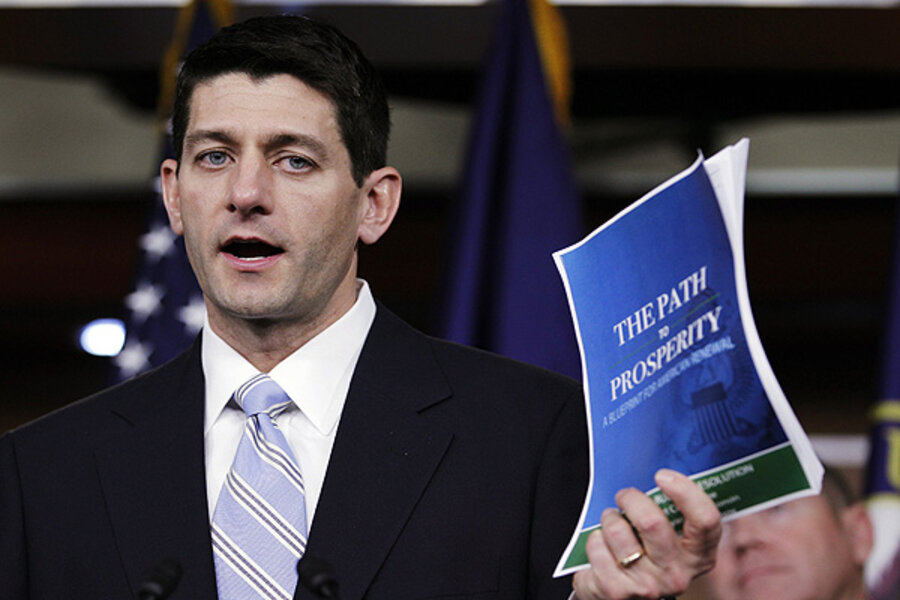Why Ryan's budget is music to Democrat's ears
Loading...
Paul Ryan may not have intended it, but his 2013 budget is the strongest argument I’ve seen for why any serious fiscal plan must include new revenues. It’s far more convincing than partisan Democratic complaints.
Ryan says he wants to balance the budget only by cutting spending. But he proved with hard, relatively specific numbers (on the spending side, at least) that he can’t get there from here. And if you take the second page from the Republican hymnal and add huge tax cuts to the mix, you may find yourself headed off in just the wrong fiscal direction.
Ryan’s fiscal math work only works with rapid, historic changes in government—something Congress doesn’t do well and the public struggles to accept (health reform anyone?). It would force Republicans to make one career-killing vote after another. Tea-partiers might rejoice, but there is stuff in this budget that is political death for senators and any House members running in swing districts.
Let’s look a few:
Medicare. Ryan’s budget includes a version of the premium support plan he designed with Democratic Senator Ron Wyden (D-OR). But while a system where seniors get subsidies to buy health insurance on the private market might make economic sense, it is wildly unpopular. Some surveys show 70 percent of those asked favor the current system.
According to the Congressional Budget Office, Ryan would dramatically cut federal spending for new enrollees over time. It figures that by 2050 the federal share of Medicare costs would be 42 percent lower under the Ryan plan than under CBO’s best guess of the future path of Medicare spending. In that year, CBO expects the feds would spend $19,100 in 2011 dollars on a typical 67-year-old. But it would spend only $11,100 under the Ryan plan. That suggests seniors would pay a lot more even if medical care becomes more efficient.
Medicaid: Compared to 2011, Ryan would cut other federal health spending (for Medicaid, the children’s health insurance program, and subsidies under the 2010 health law) in half from 2011 levels by 2050 (measured as a share of Gross Domestic Product). Compared to CBO’s best guess of the path of spending, that’s a 75 percent cut.
Everything else: Ryan would reduce spending for the rest of the federal government from 12.5 percent of GDP in 2011 to 3.75 percent by 2050. CBO estimates spending for these programs has never been lower than 8 percent at any time since World War II. Defense spending is 4.6 percent of GDP today and CBO notes it has never fallen below 3 percent during that period.
This implies Ryan and the GOP would either have to support unprecedented cuts in the Pentagon budget or leave almost no money for everything else the federal government does—highways, air traffic control, national parks, food safety, farm subsidies, and the like. Tough to imagine.
And for all of that, it still would take Ryan two decades to balance the budget.
Then, there are taxes. As TPC showed in its analysis of the tax provisions of the Ryan budget, he has dug for himself a fiscal hole of Grand Canyon proportions. He’d cut taxes by $4.6 trillion over 10 years, on top of the $5.4 trillion in revenue the government loses after he permanently extends the 2001/2003 tax cuts. To pay for those tax cuts, he’d either have to slash big, politically popular tax preferences such as the mortgage interest deduction or find even more spending to cut.
So the lesson from Ryan budget is clear: It is not possible in any political universe most of us reognize to cut spending like this budget implies. Of course, Ryan is a smart guy who knows this very well. So maybe he intended to send this message after all.





